Container Gardening Ideas for Vegetables
This is a series of the same title, with each part featuring a vegetable.
Part 2: CINNAMON (C)
It is my first time to eat fresh cinnamon, and I got lucky that I ate the Mindanao cinnamon. It tastes sweet and distinct; it tasted pure bliss. Serious!
Yes, cinnamon is a spice (not a vegetable), but then, eating our vegetables with cinnamon on it is much more fun, flavorful, and elegant.
What is Mindanao cinnamon?
Mindanao cinnamon, like Ceylon and Kalingag cinnamons, belong to the genus Cinnamomum (family Lauraceae). Its scientific name is Cinnamomum mindanaense, and is considered a synonym to Cinnamomum burmanii, per the Plant List Org., a collaboration between the Royal Botanic Gardens, Kew and Missouri Botanical Garden. It is called “Kami” by the Bagobo; also, “Mana” (or “caui mana“, kahoy mana, or sweet wood) in other parts of Mindanao. Mindanao cinnamon is a small tree, usually 10m in height, per the Research Information Series on Ecosystems (RISE) by the Department of Environment and Natural Resources (DENR). Mindanao cinnamon is endemic to the Philippines.
How important is Mindanao cinnamon?
Mindanao cinnamon is the spice that, among other reasons, incited the colonization of the Philippines by Spain. (!!!) In the article, “The Mindanao Cinnamon“, written by Francisco Mallari, S.J., that came out in Philippine Quarterly of Culture and Society (Vol. 2, No. 4 (DECEMBER 1974), pp. 190-194), it was detailed how the Mindanao cinnamon became central to the Spanish interest, after Magellan bartered “two large knives for 17 pounds of cinnamon” in Mindanao in 1521. After Magellan was killed in Mactan, the Spanish fleet went back home, along with the Mindanao cinnamon. It must be so good that another expedition, led by Jofre de Loaisa in 1525, was again launched by Spain to find the Mindanao cinnamon. That expedition failed. Finally, Miguel Lopez de Legazpi was ordered by the Spanish Crown in 1565 to find the Philippines, specifically for the Mindanao cinnamon. In the same year, the Philippines was colonized by Spain. And, the rest is history.
Wow. Why did they risk Spanish lives and money to find the Mindanao cinnamon, and kill lives of many Filipinos? You see, at that time, cinnamon was “gold dust” for Europe, and the Mindanao cinnamon is “gold dust”. It is so distinct in its fragrance and flavor, and it may well be as good as the Ceylon cinnamon, which at that time and until now, considered as the best cinnamon in the world. Yes, the Philippines has its own “gold dust”, and it is in the form of Mindanao cinnamon.
How does Mindanao cinnamon taste like?
Fast forward 2017, Mindanao cinnamon is the best cinnamon I’ve tasted so far. It tastes sweet and has a distinct cinnamon flavor. The smell? Like apple cinnamon pie.
I’ve tasted many powdered cinnamons in bottles, but Mindanao cinnamon is the only one that I’ve tasted fresh. Perhaps that’s the reason: fresh is best; and, the flavor and fragrance of the Mindanao cinnamon is really such an experience. I hope you could try it.
How different is Mindanao cinnamon compared with Ceylon and Kalingag cinnamons?
Let’s do a bit of fun, geeky stuff, so we have another talking point with our friends while we sip that heavenly cinnamon drink. Let’s see some differences among their leaves.

One major difference among the three leaves are its tips (they call it apex).
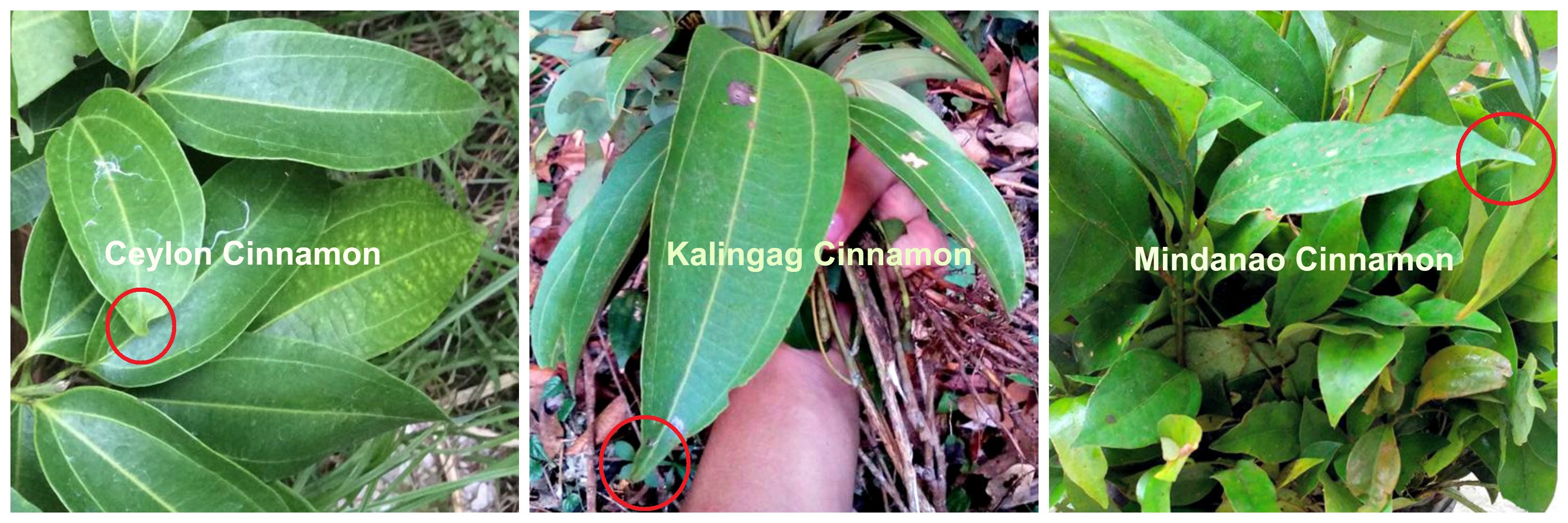
As you can see in encircled areas, the tip of the Ceylon cinnamon is not as longish (they call it acute) as that of the Kalingag, more so compared to the Mindanao, which is very pronounced (they call it acuminate).
The second difference is in the shape of the leaves. Ceylon cinnamon has a roundish shape, while the Mindanao cinnamon leaf has a roundish-elongated leaves, and the Kalingag cinnamon leaf has the most elongated leaves among the 3.
Finally, (and it may not be apparent in this collage), the veins of the leaves are different. Ceylon and Kalingag cinnamons have vertical-ish veins, while Mindanao cinnamon has netted veins.
How to plant Mindanao cinnamon in container?
In the same article by RISE-DENR, it mentioned that the Mindanao cinnamon can be propagated via seed (collect before they start to open and germinate) or cutting (15-20 cm long, 2.5-5 cm diameter). (The RISE-DENR article is in PDF. In case you’re not able to open it, please message me your email address so I could send the article to you.)
Sow seeds in garden soil, and keep it moist (but not flooded). Transplant seedling when it is about 50 cm in height.
Container size. The Mindanao cinnamon tree grows up to 10 meters in height. The minimum container size should at least be 5 gallons (19 liters) or Height: 11″/ Diameter: 13″. The estimate of container size is based on the recommendation of the University of Florida.
As for me, I plan to use a container with dimension of 33 inches tall and 23 inches diameter (below). I’ll just hole the sides and bottom for drainage.

I’ll coppice (cut back to ground to stimulate growth) the tree at age 2-3 years. Of course, I can pick the leaves for cooking or tea anytime, and peel off the bark when the tree gets a thicker bark.
Soil. Well-draining. Perhaps, the greatest challenge would be to mimic the rich forest soil that is home to the Mindanao cinnamon. Hence, regular fertilizing with organic matter (compost) would be critical, so the cinnamon tree could realize its full flavor, fragrance, and medicinal properties that this tree draws from the rich soil.
Sunlight. Full sun.
Spacing. 4 x 4 meters.
The Mindanao cinnamon tree is perennial, meaning, as long as I take good care of it and, not counting strong winds and what-not, my family will enjoy this tree and its gifts for generations to come. Also and especially because my garden is organic, the soil will get richer, as time passes.
What are the health benefits of Mindanao cinnamon?
Per the RISE-DENR:
“Barks: remedy for stomachache”
“Leaves, roots, and branches: have stimulant and carminative properties, remedy for rheumatism, stomach trouble, fever; neutralize poison-infected wounds; contains eugenol, terpenes, cinnemic aldehyde, and benezaldehyde as useful compound.” Carminative means “relieves flatulence”.
Per the United States – The National Center for Biotechnology Information (US-NCBI):
“Cinnamon has been used as a spice in daily life without any side effects. Several reports have dealt with the numerous properties of cinnamon in the forms of bark, essential oils, bark powder, phenolic compounds, flavonoids, and isolated components. Each of these properties plays a key role in the advancement of human health. The antioxidant and antimicrobial activities may occur through the direct action on oxidants or microbes, whereas the anti-inflammatory, anticancer, and antidiabetic activities occur indirectly via receptor-mediated mechanisms. The significant health benefits of numerous types of cinnamon have been explored. Further investigations are necessary to provide additional clinical evidence for the traditional uses of this spice against cancer and inflammatory, cardioprotective, and neurological disorders.”
How much cinnamon is advisable to take every day? I’d suggest asking that from your doctor. As for me, maybe 1/3 teaspoon (grams) of cinnamon powder every day.
How do we use the Mindanao cinnamon?
We use Mindanao cinnamon as you would use any cinnamon that you find in the grocery, like tea, flavoring to dishes, desserts, and drinks, as a beauty regimen, and host of many other uses.

Personally, I’ve tried the following:
-
- Tea, using the Mindanao cinnamon bark (above). Boil half liter of water. Once water is on rolling boil (water is boiled rapidly with lots of bubbles forming), pour it in teapot onto 8 grams of cinnamon bark. Steep for 7-10 minutes. (Don’t boil the cinnamon if you’re making tea.) You can do a second steep of the same cinnamon bark that you initially used. Credits to Chef Guido Nijssen (leftmost) for the tea preparation.

- Tea, using the Mindanao cinnamon bark (above). Boil half liter of water. Once water is on rolling boil (water is boiled rapidly with lots of bubbles forming), pour it in teapot onto 8 grams of cinnamon bark. Steep for 7-10 minutes. (Don’t boil the cinnamon if you’re making tea.) You can do a second steep of the same cinnamon bark that you initially used. Credits to Chef Guido Nijssen (leftmost) for the tea preparation.
-
- Flavoring. Boil shrimps in water with ginger, onion, and salt. Once shrimps are cooked, put off fire, and then drop a handful of cinnamon bark and green vegetable leaves (such as pechay). The cinnamon put a gentle and elegant edge on the shrimp taste. Yum!

- Flavoring. Boil shrimps in water with ginger, onion, and salt. Once shrimps are cooked, put off fire, and then drop a handful of cinnamon bark and green vegetable leaves (such as pechay). The cinnamon put a gentle and elegant edge on the shrimp taste. Yum!
-
- Cinnamon Coco sugar. I mixed 3 coconut sugar to 1 cinnamon powder. Yum! I especially like this because coconut sugar has a low glycemic index and cinnamon has antidiabetic properties.

- Cinnamon Coco sugar. I mixed 3 coconut sugar to 1 cinnamon powder. Yum! I especially like this because coconut sugar has a low glycemic index and cinnamon has antidiabetic properties.
-
- Exfoliant. Mix 2 teaspoons of coconut oil with 2 pinches of Mindanao cinnamon bark crumbs (get the fine ones). Massage onto face and neck for 3-5 minutes, wipe off with soft cloth or tissue paper, and then rinse with water (I don’t use soap anymore). You could moisturize further, but I don’t moisturize anymore as some oil is still left on my face and neck.
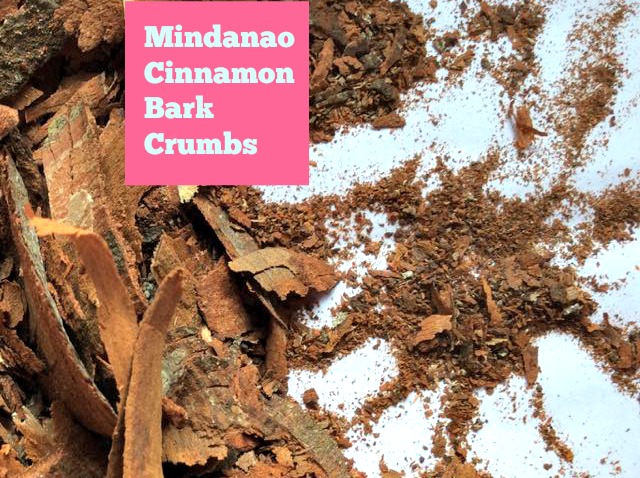
- Exfoliant. Mix 2 teaspoons of coconut oil with 2 pinches of Mindanao cinnamon bark crumbs (get the fine ones). Massage onto face and neck for 3-5 minutes, wipe off with soft cloth or tissue paper, and then rinse with water (I don’t use soap anymore). You could moisturize further, but I don’t moisturize anymore as some oil is still left on my face and neck.
-
- Hair spa. I mixed 2 tablespoons of cinnamon powder into 3 cups of coconut milk. I applied the mixture onto my scalp and massaged my scalp, using the cinnamon as a micro scrubber. Let the mixture stay on your hair for at least an hour. The result for me was soft hair, and I felt that my scalp is cleaner. As to the scent, using the words of my daughter (as I did a hair spa on her, too): “My hair smells like pan de sal, Mom!” Hahahaha! On a serious note, I’ll experiment next time what flower oil I should mix into it. I’m totally loving this hair & scalp food.

- Peanut butter sandwich sprinkle. I mixed cinnamon powder with coconut sugar, and sprinkled it on my sandwich. Yum!

Peanut butter sandwich with cinnamon coconut sugar sprinkle
- Hair spa. I mixed 2 tablespoons of cinnamon powder into 3 cups of coconut milk. I applied the mixture onto my scalp and massaged my scalp, using the cinnamon as a micro scrubber. Let the mixture stay on your hair for at least an hour. The result for me was soft hair, and I felt that my scalp is cleaner. As to the scent, using the words of my daughter (as I did a hair spa on her, too): “My hair smells like pan de sal, Mom!” Hahahaha! On a serious note, I’ll experiment next time what flower oil I should mix into it. I’m totally loving this hair & scalp food.
- Dust to hot chocolate drink. Use just a pinch to enhance the fragrance of your hot choco drink. There will be a slight slimy consistency from the cinnamon powder, so I hope you won’t mind it (I don’t).

I know I’m just scratching the surface of what I can do with the Mindanao cinnamon. I will update this blog as I make cinnamon-based products along the way.
Where to buy Mindanao Cinnamon?
You may visit the Shop page for seedling (II.3), bark crumbs and powder (IV.1 & 2), and cinnamon-based products.
The Spaniards practically wiped out our Mindanao Cinnamon, so many of us do not know and experience it. We, Filipinos, have been blessed with this gem (gold, if you must), and we should reclaim it by planting it in our backyards and by using it. Let’s grow and use the Mindanao Cinnamon!
==========================================================================




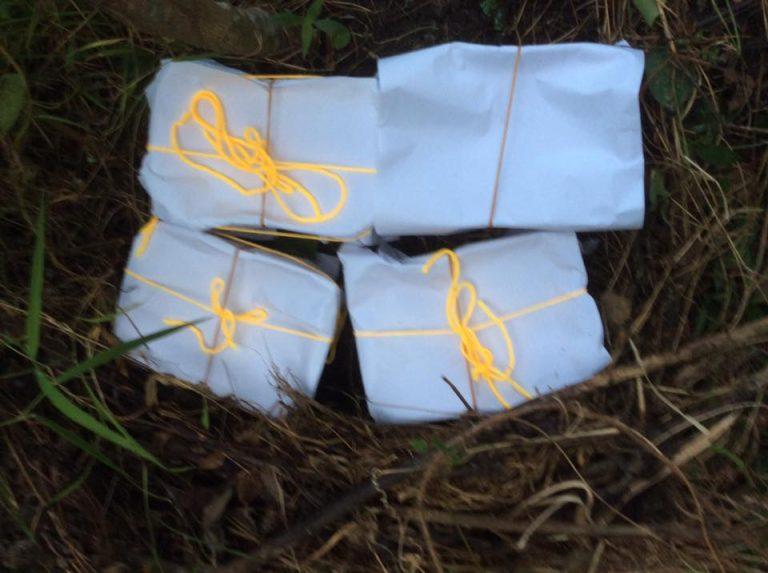

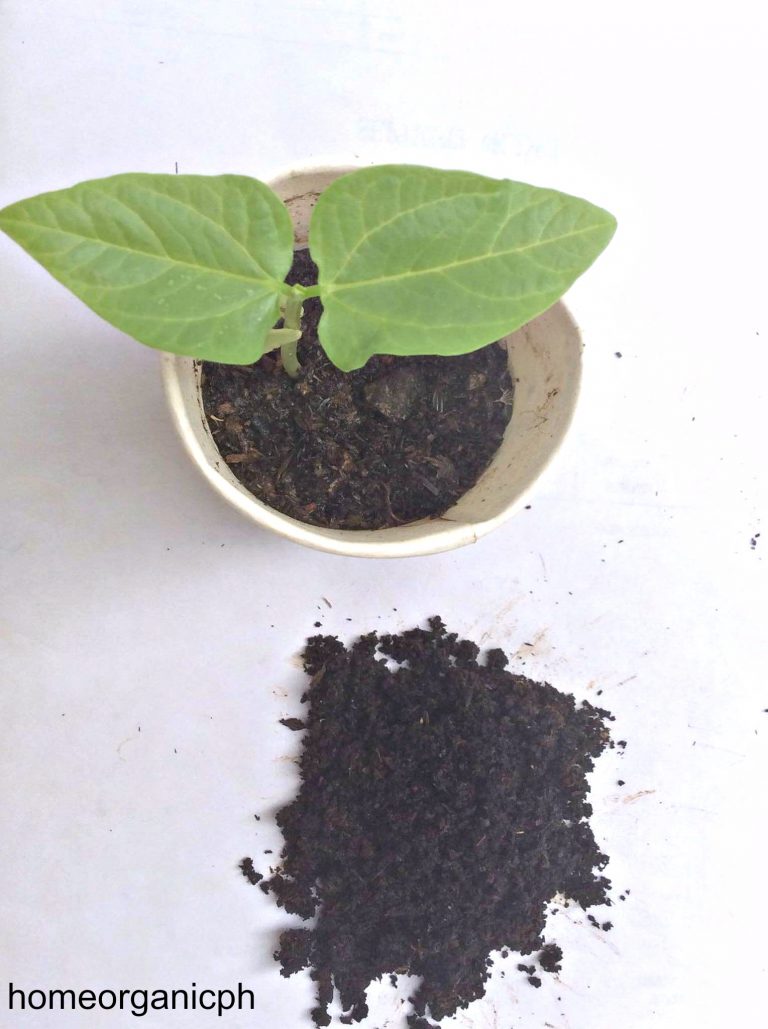
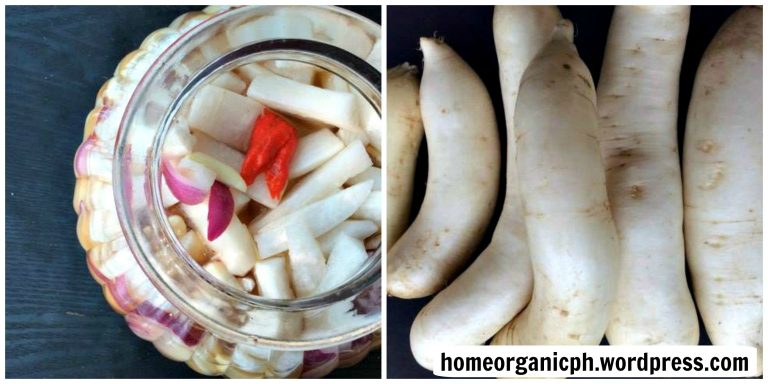
Hi! Do you have seedlings that you can share or sell? TY
Hello, Rey. Yes, I’m selling seedlings. Thanks for your interest.
Hi Rey, would you kindly email me at novemebrcanieso@yahoo.com please? Thank you.
I am interested to plant Mindanao Cinnamon..how can i avail the seeds and how much ?Thank yoy.
Hello, Ella. Thank you for your interest. May I request if you could kindly send me an email at novembercanieso@yahoo.com, or in my FB Page Home Organic PH, or in the “Contact” section here? Thanks a lot.
Hi,
Interested to buy the seedling , please let me where we can buy and how much. Thank you
Thank you for your interest. Appreciate if you email me privately at novembercanieso@yahoo.com. Thank you.
Hi Charlyn, thank you for your interest. May I request if you could contact me through any of the following:
novembercanieso@ yahoo.com
Home Organic PH Facebook page
Thank you, and see you there.
Hi Nov now i understand how promising our phil cinnamon i hope someday i could grow my own tree right in my backyard… 😯 thanks
Thanks, Bong. Go for it!
Hi November. Might I request for the PDF copy of RISE-DENR article about Mindanao Cinnamon? As well as info on, how and how much, to acquire seeds or seedlings of Mindanao Cinnamon? Kindly send it to my email add: cg2gas@gmail.com. Thanks! I find this very interesting, as you’ve said, very few of us know about it. I am an Organic gardener in Northern Mindanao, and I had no idea about this. Would really love to know more, and grow it back into our native soil. Thanks again!
Thank you for your interest on Mindanao cinnamon, Carmelo. I have already emailed you the article, as well as all the info that you requested. Regards.
Hi nov, i’m jojo salvador of Tagum City, Davao del Norte, may I know how much is your seedlings of Mindanao cinnamon? I am also advocating for the use and preservation of Philippine trees like the cinnamons.
Hello, Mr Salvador. Thank you for your message. Yes, let’s continue on advocating for and using the Philippine cinnamon species. I learned that only when there’s a market that local farmers will protect the species. The Mindanao cinnamon seedlings are P350 each (plus shipping). I also have the Mercadoi cinnamon, in case you don’t have it yet. For the Mercadoi, I can give you a wholesale price. Kind regards.